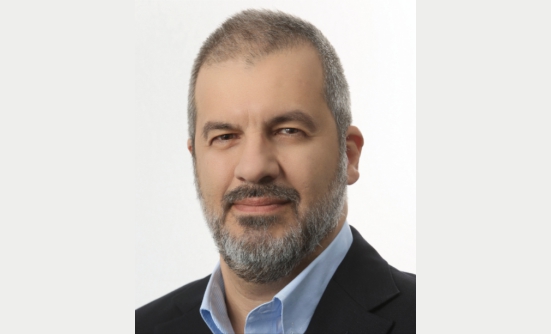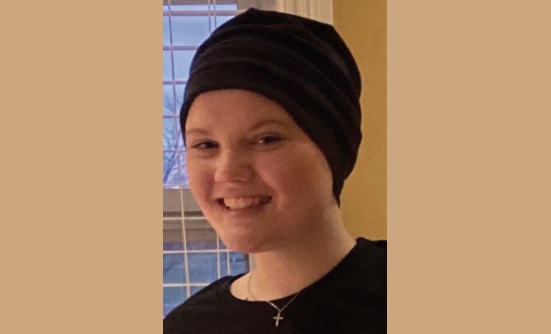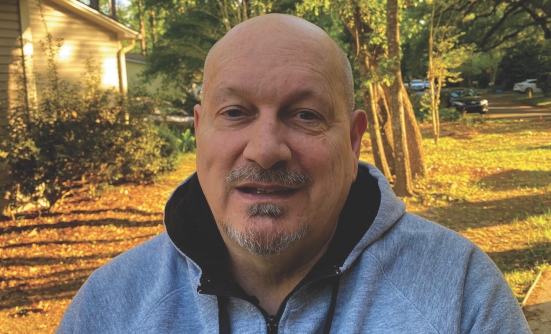
In the world of cancer and cancer prognosis, there is a hierarchy of concerns for the physician and the patient. From treatment strategy to quality of life and life expectancy, nearly every cancer diagnosis represents its own world. Still, certain cancers are considered at the top in terms of gravity and urgency.
Glioblastoma multiforme (often referred to as GBM), or glioblastoma for short, is one such cancer. Most often found in adults (the average age is 64), glioblastoma is considered the most common and aggressive type of brain cancer in adults, accounting for 48% of all primary malignant brain tumors.1
In the United States, glioblastoma made headlines after Ted Kennedy and John McCain died of this type of brain cancer.
Glioblastoma often arises from astrocytes, which are star-shaped cells that nourish neurons in the brain. Although glioblastoma cells may diffuse into other parts of the brain, based in large part on their ability to generate new blood vessels, glioblastoma generally doesn’t spread (metastasize) outside of the brain.
The current treatment options for glioblastoma are limited, and the typical survival time is about 12 to 15 months. Glioblastoma has the lowest 5-year survival rate of any brain cancer: less than 7% of patients surviving for 5 years or longer.2
Because of its aggressive nature, by the time a patient complains of symptoms, glioblastoma is often diagnosed when the cancer has advanced to stage IV (metastatic cancer), when the treatment is most challenging.
Risk Factors
Several conditions are known to increase the risk of this type of brain cancer. The main risk factors include:
- Receiving radiation therapy to the head or neck
- Age older than 50 years
- Certain genetic syndromes, such as neurofibromatosis, a genetic abnormality that can be inherited from parents or linked to a genetic mutation.
Symptoms of Glioblastoma
Because glioblastomas are fast-growing, the initial symptoms are caused by tumor pressure in the brain. The common symptoms of glioblastoma include:
- Constant headaches
- Cognition or memory problems
- Changes in mood or personality
- Double or blurred vision
- Loss of balance
- Nausea and vomiting
- Seizures
- Speech difficulties.
The dire prognosis of glioblastoma was felt more acutely at the height of the COVID-19 pandemic. With lockdowns restricting hospital visits, patients with glioblastoma—who were already neurologically unstable—became increasingly isolated and fragile, adding another layer to the urgency of finding alternative therapies for this type of cancer.
Current Standard-of-Care Treatments
The current treatment options at diagnosis include surgical removal of the tumor, followed by daily radiation plus oral chemotherapy for 6 weeks, and an additional 6-month regimen of adjuvant oral chemotherapy, taken 5 days every month. Currently, several oral or intravenous (IV) chemotherapies are available for the treatment of glioblastoma.
Although surgical removal of the tumor is now guided by new technologies that accurately identify the tumor mass within the brain, even the most experienced surgeons are often unable to remove all the tumor cells, for fear of damaging brain functions. Therefore, local recurrence (return) of the tumor remains the largest treatment challenge in the care of patients with glioblastoma.
The main challenges in the treatment of glioblastoma include the limited physical access to the tumor, the small number of drugs that can cross the blood–brain barrier (which are needed to treat brain cancer), and the difficulty in administering drugs that can provide optimal control of the tumor. Consequently, there has been little advancement in glioblastoma treatment in the past 25 years.
A Paradigm Shift: Delivering Drugs Directly Into the Brain
Physicians typically rely on systemic drug administration to the patient via IV injection; however, this treatment strategy is associated with systemic (full-body) side effects and low amounts of the drug that are delivered directly to the tumor. With the additional difficulty of accessing the brain, there has been a recent shift in the treatment of glioblastoma, focusing on delivering drugs locally directly into the brain instead of systemically through IV injection.
The main challenge in direct delivery of drugs into the brain is the ability to expose the brain tumor cells to high concentration of the drug, and for a sufficient period that could substantially eliminate the tumor cells, especially tumor cells that are resistant to chemotherapy. Local delivery strategies administer drugs directly on the surgical tumor cavity to overcome the limitation of accessing the brain and to bypass the need to use drugs that can cross the blood–brain barrier. The following newer treatment approaches are currently in use or in development.
Convection-enhanced delivery (CED) is a method that uses a pressure gradient at the tip of an infusion catheter to deliver drugs directly into the brain parenchyma (functional brain tissue). This technique can be used with various therapies, including chemotherapy, gene therapy, and immunotherapy. Although CED shows promise, no studies have shown that it is superior to the current standard of care. Furthermore, one study indicated that CED does not improve the survival rate significantly compared with the current standard of care.3
Gliadel Wafer is a local therapy that has shown to extend survival in patients with glioblastoma.4 The small “wafers” are implanted in the brain where the tumor was removed. These wafers release chemotherapy to destroy any remaining cancerous tissue after surgery. Although Gliadel Wafer is able to extend the life of a patient moderately,4 this therapy is also associated with serious side effects.
According to a recent clinical trial, patients treated with Gliadel Wafer had severe brain edema (brain swelling that can be life-threatening) and a cystic formation in the surgical cavity where the tumor was.5 Thus, although this treatment is effective in controlling brain tumor growth, it may also cause severe side effects.
Tumor-treating fields (TTFields) therapy is a portable electric device that is applied to the shaved scalp of patients for more than 18 hours a day, for at least 4 weeks. The device delivers alternating electric fields that disrupt cell division in tumor cells, thereby preventing the growth of the tumor. A recent review explored the clinical benefits of TTFields’ in glioblastoma and concluded that the combination of TTFields therapy and drug therapy can prolong a patient’s survival time, with only limited dermatologic side effects, most often skin side effects.6 However, the need to shave the patient’s head regularly and to carry the device throughout the day can be quite inconvenient for patients.
In 2011, the FDA approved TTFields for the treatment of certain tumors, including glioblastoma; however, the high cost of this therapy is a major concern. An updated evaluation of TTFields’ cost suggested that this therapy is not cost-effective,7 which can limit its use by eligible patients.
OncoPLEX is a potentially new treatment being developed for glioblastoma. OncoPLEX is a lipid-polymer platform-based drug that encapsulates a potent chemotherapy, and is applied once during glioblastoma surgery directly into the surgical cavity in the form of a spreadable paste that provides local exposure to high concentrations of the chemotherapy docetaxel, for several weeks.
OncoPLEX is currently in the preclinical stage and is being investigated for the treatment of patients with newly diagnosed glioblastoma. Early preclinical data in animal studies demonstrated that it may have potent anti-cancer effects by eliminating resistant cancer cells in the brain. If successful, this may be a new treatment option and offer new hope for patients with glioblastoma.
References
- National Brain Tumor Society. Learn: glioblastoma facts & figures. https://braintumor.org/take-action/about-gbm/.
- Ostrom QT, Cioffi G, Gittleman H, et al. CBTRUS statistical report: primary brain and other central nervous system tumors diagnosed in the United States in 2012–2016. Neuro-Oncology. 2019;21(suppl 5):v1-v100.
- Bogdahn U, Hau P, Stockhammer G, et al. Targeted therapy for high-grade glioma with the TGF-β2 inhibitor trabedersen: results of a randomized and controlled phase IIb study. Neuro-Oncology. 2011;13(1):132-142.
- CancerConnect. Gliadel Wafer improves survival in aggressive gliomas. June 29, 2018. https://news.cancerconnect.com/brain-cancer/gliadel-wafer-improves-survival-in-aggressive-gliomas.
- Salle F, Lahiani W, Spagnuolo E, Palfi S. Adverse event with the use of carmustine wafers and postoperative radiochemotherapy for the treatment of high-grade glioma. Asian Journal of Neurosurgery. 2018;13(4):1171-1174.
- Liu S, Shi W, Zhao Q, et al. Progress and prospect in tumor treating fields treatment of glioblastoma. Biomedicine & Pharmacotherapy. 2021;141:111810. www.sciencedirect.com/science/article/pii/S0753332221005928.
- Connock M, Auguste P, Dussart C, et al. Cost-effectiveness of tumor-treating fields added to maintenance temozolomide in patients with glioblastoma: an updated evaluation using a partitioned survival model. Journal of Neuro-Oncology. 2019;143(3):605-611.
Key Points
- Glioblastoma is considered the most common and aggressive type of brain cancer in adults, accounting for 48% of all primary malignant brain tumors
- The average age of patients with this type of brain cancer is 64
- Glioblastoma has the lowest 5-year survival rate of any brain cancer, with only less than 7% of patients surviving 5 years or longer
- The typical survival time of patients with glioblastoma is about 12 to 15 months
- The symptoms of glioblastoma include memory problems, changes in personality, double or blurred vision, loss of balance, nausea and vomiting, seizures, and speech difficulties
Patient Resources
Glioblastoma Foundation
https://glioblastomafoundation.org
National Brain Tumor Society
www.braintumor.org
















